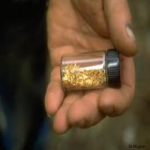 Knowledge could be lost with the method of common core education standards
Knowledge could be lost with the method of common core education standards
Sometimes, a piece of stray information, something you don’t know you know, becomes important. Maybe, when you were in school, taking a particularly uninteresting class, you said, “Why do I have to learn that? I’ll never use that information.” Or maybe you picked up some piece of trivia from your reading, filed it away and forgot it – or so you thought. The thing is though, you never know what might be important some day. I had an experience like that, an experience when some long forgotten piece of trivia nagged at my memory. It had to do with Miss Pickle.
One of the first assignments I had as a geologist was to examine an old mining district in New Mexico. The objective was to visit the prospects and determine if they might hide an ore deposit of interest to the company I worked for. This old district slumbered in a low range of hills in the boot heel of New Mexico, south of Lordsburg. It was a place which apparently had seen a few years of glory but then faded into history when the bonanza ore and promise of riches dwindled. My literature research found little information on the mines, but I did find a good topographic map.
In those days, the United States Geological Survey, before they became politically correct, used to plot all the old mines and prospects on the topographic maps, so I had a good guide, at least to the location. Small prospects, holes less than 10 feet deep, were marked on the map with X’s. Tunnels and adits were marked by arrows and the larger shafts were marked with squares. Some of the mines even had names printed on the map.
This particular area consisted of a central core of perhaps 50 prospects covering about 3 square miles. There were, however, some outliers, and one of these outliers had the label “Miss Pickle.”
Mining claims are named for a wide variety of things, limited only by the imagination or hopes of the prospector. For instance, the Christmas mine near Kearney, an important copper mine until a few years ago, was found on Christmas day. The original Tombstone claim was named because the prospector was told that if he ventured into Apache country, he would find nothing but his tombstone.
Many claims are named after women. There’s the Little Daisy near Jerome, a bonanza copper mine, which was named after the miner’s daughter. The New Cornelia mine at Ajo, now a large open pit, was named after the wife of one of the early investors, perhaps in the hope of securing more financing. The Mary G near Arivaca was named after a lady of the evening. She must have been inspiring. My favorite name of that ilk is one near Courtland, east of Tombstone, a mine named “Maid of Sunshine.” I wonder what kind of women could evoke a name like that. Somehow, the name “Miss Pickle” didn’t seem to inspire such a grand vision. But something was nagging at my memory. I had seen that name before.
I packed up my truck and headed for New Mexico. I spent the day examining the main workings of the old mining district. Things were not encouraging. There were the usual signs of copper and zinc, but nothing to indicate a deposit that would be interesting to a major mining company. Since the core of the district was not interesting, there was little chance that the few outlying prospects would be any better. Yet, the name “Miss Pickle” was still nagging at my memory, so I decided to take a chance and pay Miss Pickle a visit.
After an hour of traversing old, washed-out roads, I arrived at the Miss Pickle mine to see a prospect typical of the 1880s. There was an adit, two shafts, and piles of waste material surrounding them. Nothing remarkable, it looked like hundreds of old prospects I’d seen before. Our standard procedure was to collect samples for chemical analysis and to carefully scan the dumps to gather a suite of minerals that would characterize the mine and allow us to determine if the mineralizing system was one capable of producing something of interest.
I took out my rock hammer and started breaking rocks to look at the minerals they contained. The third rock I broke gave off the distinct odor of garlic. That was significant. I took out my hand lens to get a closer look. That’s when I saw it. It now became clear why the mine was called Miss Pickle and I remembered then, where I had seen the name before.
Miss Pickle was no lady. The name is a play on words between English and German. I had seen the name in Dana’s Textbook of Mineralogy which often gives alternative names for minerals. The old prospectors had a sense of humor. You see, “Mispickel” is the German alternative name for the mineral arsenopyrite (arsenic sulfide) which gives off the odor of garlic when broken. Maybe I remembered it because it sounded funny. Arsenic minerals frequently overlie gold deposits, something confirmed in this case upon analysis of the samples I collected.
You can never tell what will be important. It was my nagging memory of Mispickel that caused me to take a chance and find the gold.
I suppose the moral of this story is that you should read widely; you never know what might be valuable in the future.
